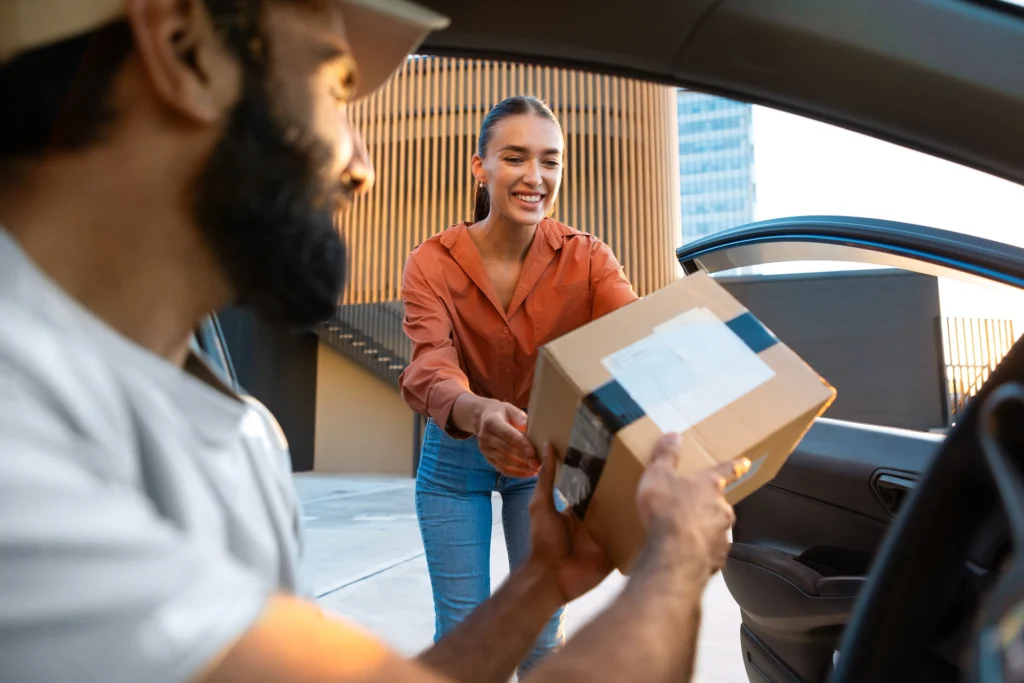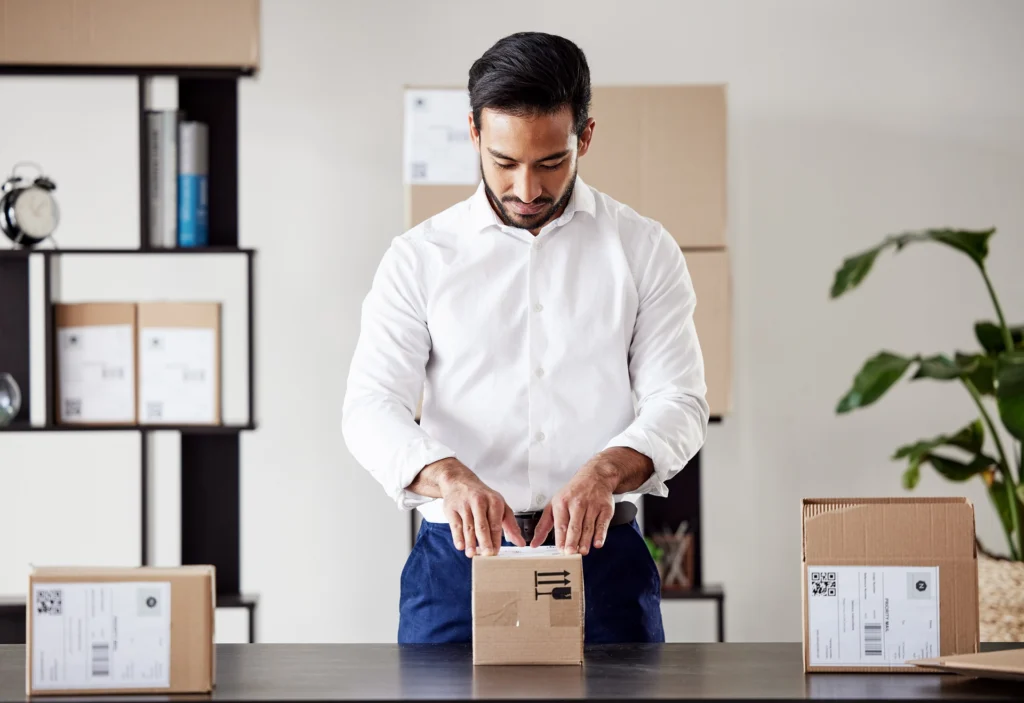6 Same-Day Delivery and Instant Fulfillment Strategies to Meet Customer Expectations in Last-Mile Delivery

Wise Systems

In today’s fast-paced digital world, there’s a growing demand for same-day delivery and instant fulfillment in the retail and e-commerce sectors.
Meeting customer expectations with same-day delivery and instant fulfillment in last-mile delivery requires a multifaceted approach that combines logistics, technology, and customer service strategies. In this guide, we’ll discuss proven same-day delivery and instant fulfillment strategies companies can implement to meet these demands and maintain a competitive edge.
In this article:
- What is Same-Day Delivery?
- What is Instant Fulfillment?
- Demand for Same-Day Delivery and Instant Fulfillment
- Establish Localized Distribution Centers & Micro-fulfillment Centers
- Optimize Delivery Routes
- Implement Real-time Tracking and Visibility
- Leverage Artificial Intelligence (AI) and Machine Learning (ML)
- Offer Flexible Delivery Options
- Enhance Customer Service
- Frequently Asked Questions
What is Same-Day Delivery?

Same-day delivery has become a popular shipping option that allows customers to receive their purchases on the same day they order them. This service aims to meet the growing need for fast and convenient delivery, especially in online shopping.
By offering same-day delivery, retailers gain a competitive advantage by providing immediate satisfaction and convenience, which leads to increased customer satisfaction and loyalty.
To make same-day delivery possible, careful coordination of logistics and efficient fulfillment processes are essential. This includes quick order processing, strategic distribution of inventory close to the customer base, and utilizing fast transportation methods. Many retailers and delivery services use tools such as route optimization and real-time tracking to support these processes.
What is Instant Fulfillment?
Instant fulfillment is all about making sure that customer orders are fulfilled very quickly—almost immediately after the order is placed. The aim is to shorten the time between when an order is placed and when it is processed as much as possible.
It goes beyond just delivering on the same day and focuses on making the fulfillment process take only a few hours or even minutes.
To achieve instant fulfillment, companies use highly efficient logistics operations. This includes using automated systems to process orders, keeping track of inventory in real-time, and strategically placing inventory in micro-fulfillment centers or urban warehouses that are located very close to end consumer.
Demand for Same-Day Delivery and Instant Fulfillment

The rapid fulfillment trend began with giants like Amazon, which offered free two-day delivery services for Amazon Prime members. In 2020, the COVID-19 pandemic skyrocketed demand for same-day delivery and next-day delivery.
With some of the largest retailers—Amazon, Walmart, and Target—prioritizing faster fulfillment, consumers have come to expect same-day and next-day delivery when shopping online.
Amazon, for example, overhauled its delivery network to reduce shipping times from the previous two-day standard to one day or less. By the second quarter of 2023, Amazon had delivered 1.8 billion packages the same day or the next day—a four-fold increase from the second quarter of 2019.
This has created a highly competitive landscape where same-day delivery and instant fulfillment are essential offerings rather than premium services.
Below, we’ll discuss some proven same-day delivery and instant fulfillment strategies to speed fulfillment, shorten delivery times, and meet customers’ expectations in last-mile delivery.
Establish Localized Distribution Centers & Micro-fulfillment Centers

Localized distribution centers and micro-fulfillment centers play a crucial role in enabling companies to offer instant fulfillment and same-day delivery services by addressing several key logistical challenges.
Localized distribution centers are strategically placed closer to where customers live, significantly reducing the distance and time required for deliveries. This proximity allows for faster shipping and enables same-day delivery services.
Micro-fulfillment centers are often located within urban areas or even within retail stores, designed to be even closer to the end customer. Their urban locations are ideal for instant fulfillment, as they can quickly process and dispatch orders for delivery within hours or even minutes.
Optimize Delivery Routes
Optimizing delivery routes makes the delivery process faster and more efficient. By calculating the most efficient routes based on various factors such as traffic conditions, delivery windows, and the number of stops, route optimization ensures that delivery vehicles take the shortest and fastest paths.
More companies are leveraging dynamic routing software, which can adjust delivery routes in real-time based on traffic, weather, and unexpected delays, optimizing delivery times. This minimization of travel time is crucial for meeting tight delivery schedules, including same-day delivery.
Implement Real-time Tracking and Visibility
Tune in to our latest Feature Spotlight to discover how simplified route visualizations help you make decisions more quickly. Schedule a demo with us today to learn more about Route Planner from Wise Systems here! https://t.co/dMPjyYSEZv pic.twitter.com/AfKpRXJkyq
— Wise Systems (@goWiseSystems) April 10, 2023
Real-time tracking provides logistics managers and operational teams with up-to-the-minute information on the status of orders throughout the fulfillment process, from picking and packing to out-for-delivery status. This visibility allows for proactive management of the delivery process and quick resolution of any issues that may arise.
It also enables customers to track their deliveries in real-time, so they know precisely when their package will arrive. This transparency improves customer satisfaction and trust.
Leverage Artificial Intelligence (AI) and Machine Learning (ML)
Artificial intelligence and machine learning power predictive analytics, which is used for demand forecasting, inventory optimization, and route planning.
AI/ML algorithms can analyze historical data and identify patterns to predict future demand for products—and even which products are likely to be in demand in specific locations—with high accuracy. This enables companies to optimize their inventory levels and strategically place inventory in localized distribution centers or micro-fulfillment centers closer to the customer, ensuring that products are available for instant fulfillment without overstocking.
AI and ML algorithms are also used to optimize delivery routes. These technologies can process vast amounts of data in real-time, such as traffic conditions, weather, and delivery windows to determine the most efficient delivery routes, reducing delivery times and increasing the number of deliveries a driver can complete.
Offer Flexible Delivery Options

Customers value the ability to choose delivery options that best suit their schedules and needs. By offering a range of delivery times, including same-day, next-day, and nominated day delivery slots, as well as options like curbside pickup or parcel locker pickup, companies can cater to individual preferences, enhancing customer satisfaction and loyalty.
In addition, offering flexible delivery options allows companies to optimize delivery routes and schedules more efficiently. By grouping deliveries within similar time slots or geographic areas, companies can reduce travel times and costs, enabling more efficient use of delivery resources.
Enhance Customer Service
Ensure that customer service is well-equipped to handle inquiries and issues related to delivery promptly. This includes having a robust system for managing returns and exchanges.
Implementing a system to collect and analyze customer feedback on delivery services is also beneficial. Companies can use this data to continuously improve delivery options and improve customer satisfaction.
Implementing these strategies requires implementing the right tools, technologies, and processes. The Wise Systems delivery automation platform is a suite of powerful solutions for optimizing last-mile delivery while also reducing costs.
Request a demo today to learn more about how Wise Systems can help you meet customer expectations in last-mile delivery.
Frequently Asked Questions
What is a fulfillment strategy?
A fulfillment strategy is a plan and set of processes used by businesses to manage the storage, processing, and delivery of orders to customers. It includes everything from receiving inventory, storing products, order processing, packing, shipping, and managing returns.
What is automated order fulfillment?
Automated order fulfillment refers to the use of technology and machinery to streamline and expedite the process of fulfilling orders with minimal human intervention. This can include automated picking and packing systems, conveyor belts, robotics, and software for inventory management and shipping coordination.
How do you automate the shipping process?
Automating the shipping process involves using software to connect orders, inventory, and carrier selection to automatically generate shipping labels, select optimal shipping carriers based on rates and delivery times, and provide tracking information to customers and the business in real-time.
How is same-day delivery possible?
Same-day delivery is made possible through a combination of strategies: having multiple local distribution centers or micro-fulfillment centers close to customers, using advanced logistics software for efficient routing, and employing fast transportation methods (bikes, motorbikes, cars).
Why is same-day delivery expensive?
Same-day delivery is expensive due to the need for sophisticated logistics infrastructure, advanced technology, and the increased labor and transportation costs associated with speeding up the fulfillment process and delivering orders within a tight timeframe.

